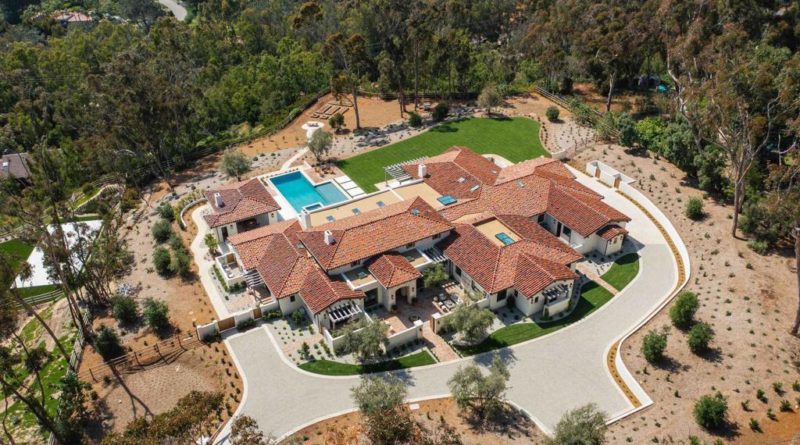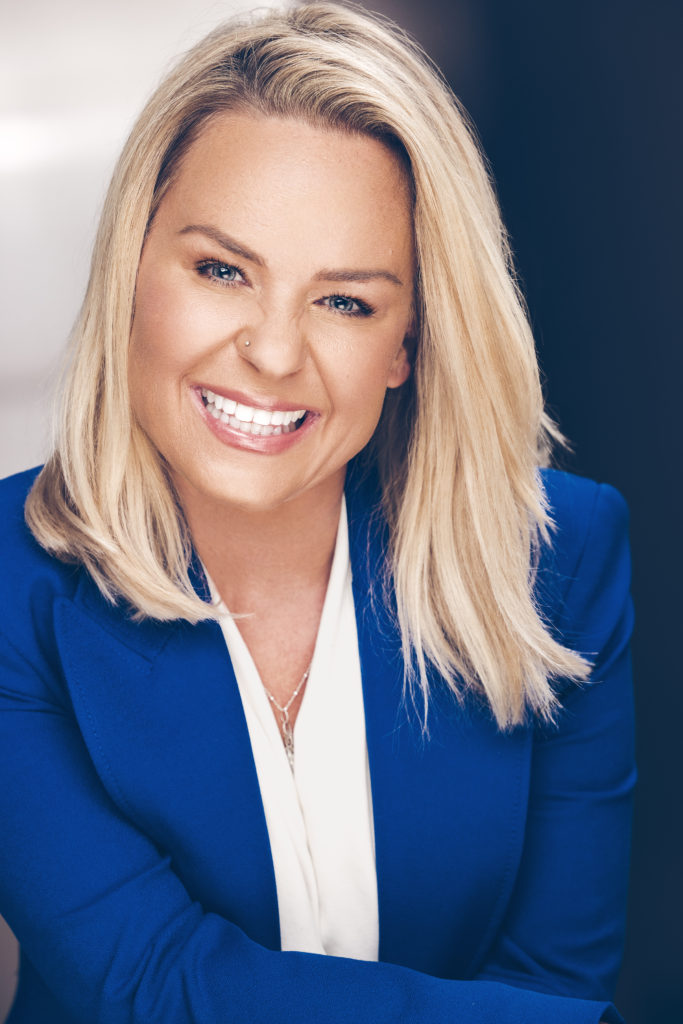The Housing Market: “It’s Nuts To Sell Right Now!”
As might be expected in times of elevated uncertainty, due to the Hamas-Israeli war and the Federal Reserve’s attempts to reduce inflation, there’s speculation where interest rates in general, and mortgage rates in particular, will be next year.
At the annual meeting of the Mortgage Bankers Association, the national society of the real estate finance industry, the group’s chief economist, Michael Fratantoni, forecast mortgage rates dropping to 6.1% by 2024’s fourth quarter.
While that might be a lifesaver to the California housing market, projected to see a 22% drop in sales this year, two other statistics could stop many homebuyers from becoming homeowners.
Nearly 92% of all homeowners have a mortgage rate below 6%, reports real estate sales platform Redfin; in addition, says Redfin, more than 82% of all homeowners have a mortgage rate under 5%.
“It’s just nuts to sell right now!” Duke University economics professor Connel Fullenkamp told SD METRO. “You can’t even downsize successfully.”
Given that mortgage rates are hovering around 8%, he said, “You could downsize and end up with the same mortgage payment as you had with a larger house.”
“It’s not so much that (interest) rates rose, it’s that they rose so damn fast that there’s nothing between the 3% and the 6.5% and 7% mortgage. If we had time to adjust to (heightened mortgage rates), we’d see more mortgages in the middle and a healthier turnover in the housing market. But this rapid jump from super low mortgage rates is a huge shock to the market and people are rationally saying, ‘There’s no way I’m going to walk away from this really low mortgage rate, even if I don’t need this particular dwelling anymore,’” Fullenkamp added.
As for next year’s fourth quarter, he doesn’t see mortgage rates much below 7%.
At Irvine, Calif.-based CoreLogic, Chief Economist Selma Hepp sees mortgage rates, at the most, at 6.5% a year from now.
“It could be anywhere between 6 to 6.5%,” she said. “But I’m leaning towards the higher number.”
Prior to COVID-19, she said, the correlation between home price appreciation and mortgage rates was that anytime rates increased, home price appreciation slowed.
What’s surprising, Hepp said, is the spread, or premium, between the 10-year Treasury note, often a benchmark for mortgage rates, and the interest rate on 30-year fixed-rate mortgages.
“It’s about 300 basis points on average over almost the last year, and it’s been 170 basis points before,” she said, adding there are factors contributing to the bigger difference.
“One is the Fed’s policies of keeping interest rates higher for longer,” Hepp said. “The other reason is concern over what happens with the U.S. government and the ever-imminent risk of a shutdown.”
Buyers’ purchasing power, she says, is also pushing home prices up.
“What’s driving home prices is a lack of inventory combined with migration patterns where people from higher income areas, more expensive areas, are moving to more affordable areas,” she said. “And with that, they’re bringing more purchasing power, which is putting pressure on home prices.”
Hepp also noted that millennials, the largest living generation, could boost house sales next year.
“The older ones are in the home-buying age,” she said. “So that’s working in favor of a speedier recovery for the housing market.”
Should the Hamas-Israeli war spread, Hepp says, that could also bring down interest rates.
“If there’s a flight to (financial) safety, we could see people buying Treasurys (Securities) again, and with Treasury rates coming down, you could have that working in favor of the housing market,” she said.
At Los Angeles-based Beacon Economics, a research firm, founding partner Christopher Thornberg sees mortgage rates in next year’s fourth quarter this way – “Easy in the 8s,” meaning at least 8% if not higher.
“And that’s slightly optimistic,” he said. “That presumes the economy is slow enough to give the Fed the space it needs to back off (higher interest rate increases).
“Remember, the Fed is on this quixotic mission to conquer inflation, when, clearly, inflation hasn’t meant a damn thing for the economy,” he said, referring to the latest statistics showing increased consumer spending.
“My presumption is inflation will start to slow next year,” Thornberg said. “With the screams from the coming election, we’ll hopefully get him (Fed Chairman Jerome Powell) to back off. If that’s the case, then, toward the end of next year, we’re back in the 8s.
“And, in theory, the year after that, 2025, we might actually see rates drop back to something in the sixes,” he added.
Freddie Mac Deputy Chief Economist Len Kiefer also sees mortgage rates remaining high.
“It’s unlikely we’re going to see a big downdraft in rates,” he said. “Maybe they’re in the high 7s or pushing 8% but I wouldn’t anticipate we’d get to the low sixes or fives absent some major shock.”
Another point Kiefer made is that higher borrowing costs have the potential to lessen people’s purchasing power and reduce their ability to seek a higher loan.
For example, the monthly principal and interest payment on a $200,000, 3%, 30-year fixed-rate mortgage – which could have been secured in 2021 – is about $843.21. To secure that same monthly payment, a borrower would only be able to get a loan for $115,000. On an 8%, 30-year fixed-rate mortgage, the monthly principal and interest payment for a $115,000 mortgage is $843.83, .62 cents more.
“That lock-in is really significant,” he said. “It’s not permanent because life will happen because people sometimes have to move because of job opportunities.”
As he sees the market, not much will change next year.
“A lot of existing homeowners are sitting on the sidelines, and I anticipate that to continue,” he said. “We’re still going to have the situation we have with low levels of inventory.”
Like Hepp, he also noted millennials could prop up the housing market in the coming year.
“There’s been about 12.6 million first-time homebuyers since 2017,” Kiefer said. “So, their homes might not match their needs today if they have growing families.
“That could drive people to move and as they’ve paid down their principal balance, and seen the value of their home appreciate, that shock of higher interest rates is going to wane a bit,” he added.
While University of California San Diego economics professor Marc Muendler didn’t predict where mortgage rates would be, he says the Fed’s inflation fight will be challenging.
“It seems the U.S. economy is quite resilient and that the mandate of the Fed to cut inflation back to its target is harder to achieve,” he said. “The faster the economy works, the better it works, the harder it is to combat inflation.
“Therefore, I think the Fed’s interest rates are likely to stay elevated probably for a little longer than we would’ve thought, maybe even half a year ago. And that means all kinds of credit – bank credit, car loans, mortgages – those rates won’t come down quickly,” he added.
Muendler doesn’t see the Hamas-Israeli war impacting interest rates.
“My own prediction, when we wrote reports on what Ukraine means and sanctions will do, we found that Russia would shake off sanctions easily and yet Europe would shake off interruptions easily, and we got a lot of criticism for it,” he said. “I didn’t believe my own models and, in the end, the actual economies outperformed my models.
“In the U.S., the Inflation Reduction Act – it’s actually the ‘Inflation Promotion Act’ because it’s a lot of government spending – is keeping the economy running and in high gear despite all those global headwinds,” he continued.
The San Diego Housing Market
“It used to be there were about 7,000 listings a month in San Diego County but we’re down to 2,000,” said University of San Diego economics professor Jeremy Gabe.
“When you have tight, constrained new supply and it’s hard to generate new physical supply, you get what I call the liquidity trap,” he said. “People are locked into their current housing situation because they fear they don’t know if they’ll find another place because inventory is so tight, the pricing is so dynamic and unstable that they’re comfortable in their own current situation.
“And, of course, rising interest rates have accelerated that because you’re seeing interest rate lock-in (with many low-rate mortgages),” Gabe added.
Given high San Diego County real estate prices, he said, people with more financial means who qualify for a jumbo mortgage – one more than $977,500 – can often secure an interest rate lower than borrowers seeking a lesser amount.
“Rich people can get a mortgage rate for much less than 8%,” Gabe said. “The jumbo mortgages, the ones that are basically a million dollars or more, are more likely in the low seven percent range now or, sometimes, in the high sixes.
“These borrowers are wealthy, and the default risk is less,” he added.
Professor Muendler says the lower end of the housing market – people searching for houses under $500,000 – is much more sensitive to interest rates.
“In the upper end of the housing market, there’s less sensitivity to mortgage costs,” he said.
Adding to San Diego County’s housing issues, Professor Gabe notes, is its geographic limitations.
“San Diego and other coastal markets are constrained,” he said. “You can’t produce more land. We don’t have a West San Diego, which lops off potentially habitable part of our residential land, and, of course, Mexico creates another barrier.”
These constraints, Gabe said, “bid up the price of land and the market wants to densify it.”
Muendler sees San Diego’s landscape in a similar vein.
“The joke used to be that, in Texas, you can always transform the marginal farmland into another residential area,” he said. “It’s not that clear that it’s so different here.
“Obviously, we can’t develop in all directions. Towards the west, there’s an ocean, but there’s still a lot of land east. There are areas where I would not have thought that a hill or open space would become a development, but it does,” Muendler said.
“The urban sprawl,” he continued, “has a ways to sprawl here.”
Douglas Page is reachable at dpage@sandiegometro.com






